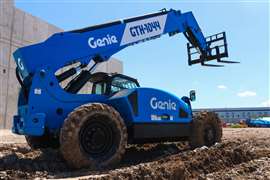Read this article in Français Deutsch Italiano Português Español
If digitalisation is here, why do half of UK construction firms still depend on paper?
29 October 2025
 Image: Puwasit Inyavileart via AdobeStock - stock.adobe.com
Image: Puwasit Inyavileart via AdobeStock - stock.adobe.com
Half of UK construction projects still rely on paper-based processes despite rising investment in technology, according to new data from software provider Bluebeam.
Its 2026 Building the Future: AEC Technology Outlook report, which surveyed more than 1,000 architecture, engineering, and construction (AEC) professionals, found that 84% of UK firms plan to increase technology spending next year. But 89% are yet to achieve full digital integration. Paper remains entrenched in key workflows, with more than half of firms (53%) still using it during the design phase and 49% during planning, Bluebeam said. Some 43% also still rely on physical signatures and approvals.
The findings suggest that while digitalisation is advancing, progress is pragmatic and often compliance-driven, which isn’t necessarily leading to full lifecycle digitalisation.
Many firms are adopting technology primarily to meet regulatory demands or on a pragmatic basis to improve efficiency in specific areas, Bluebeam said.
Meanwhile, concerns over data security, cost, complexity, and emerging regulations continue to slow progress when it comes to the adoption of artificial intelligence (AI) in construction.
Globally, 42% of survey respondents cited data-sharing security as a key barrier, while a third (33%) pointed to cost and complexity. Nearly seven in ten said uncertainty around AI regulation has also affected adoption.
That was despite the fact that 56% of respondents said AI helps to offset skilled labour shortages and 44% see advanced digital tools as key to attracting and retaining top talent.
But the report also found that nearly a fifth (19%) of companies cite a lack of digital skills and nearly a quarter (23%) mention difficulty in keeping up with rapidly changing technology as their top challenges.
Bluebeam’s chief executive, Usman Shuja, said, “The question now isn’t whether AI works – it’s how to integrate it effectively. Our customers are thriving when AI fits the way they work. 95% of early adopters in our survey use AI frequently across the building lifecycle, and nearly half reclaimed 500–1,000 hours on critical tasks like scheduling, planning and document analysis. When AI stops being hype and starts solving real problems, that’s when we see true impact, and that’s where the AEC industry is headed.”
He added, “The biggest barriers to AEC technology adoption in 2026 aren’t cost – they’re complexity, culture and connection. Success requires not just tools but training and an integrated approach that connects the dots across teams, project phases and workflows. Winning in this new era will take what I refer to as dual athletes – teams that bring construction expertise and digital fluency together to create the competitive advantage.”
STAY CONNECTED


Receive the information you need when you need it through our world-leading magazines, newsletters and daily briefings.
CONNECT WITH THE TEAM











